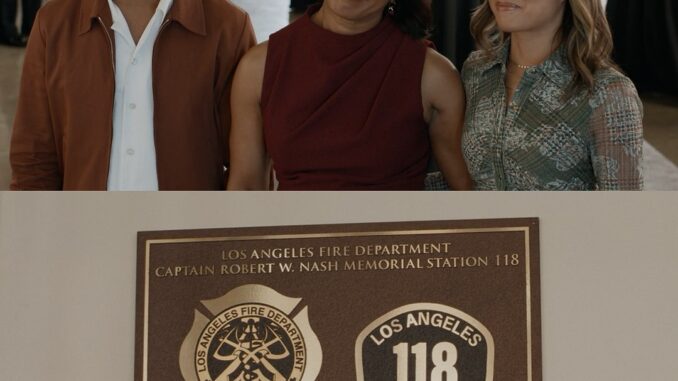
When the hit series 9-1-1 launched its jaw-dropping “space rescue” storyline, fans everywhere had the same question: Could this actually happen? Sure, Hollywood loves drama, explosions, and impossible heroics — but space is a whole different battlefield. Out there, physics becomes the final judge.
In this article, we’ll break down the real science behind the rescue mission, explore what would be physically possible, and separate cinematic magic from cold, unforgiving astrophysics. Let’s dive into the cosmos and uncover the truth behind the spectacle.
Why Space Rescues Fascinate Us
Humans love the idea of pushing boundaries. Whether it’s the deep sea, the Arctic, or outer space, we’re drawn to stories where survival seems impossible. A space rescue combines danger, heroism, and high-tech suspense — a recipe for viral storytelling.
But unlike TV dramas, space doesn’t bend for emotions. It bends only for physics.
What Happens in 9-1-1’s Space Rescue Episode?
Without diving into spoilers, the show features:
-
A spacecraft emergency
-
Astronauts trapped in an extreme environment
-
A daring mission to save lives with limited time
-
Earth-based responders coordinating a high-stakes space effort
It’s entertainment gold — but is any of it actually doable?
How Realistic Is a Space Rescue?
Space rescues aren’t science fiction. They’re extremely difficult, but theoretically possible under specific conditions.
Let’s break down the science step-by-step.
The Harsh Truth: Space Is the Most Hostile Place for Rescues
Zero Atmosphere Means Zero Margin for Error
On Earth, rescuers often have backup plans. In space, one wrong seal, one broken tether, one miscalculated angle — and it’s over.
What makes space deadly?
-
No oxygen
-
No pressure
-
Extreme temperatures
-
No gravity
-
High radiation
Imagine trying to perform CPR while floating at 17,000 mph. Not exactly ideal.
Temperatures That Swing Like Crazy
Space temperatures range from -250°F in shade to +250°F in sunlight.
Your gear must survive both extremes, sometimes within minutes.
Micrometeoroids — The Invisible Killers
Tiny particles the size of sand grains travel faster than bullets. One small puncture could spell disaster for astronauts or rescuers.
Could First Responders Actually Reach Space?
The Launch Problem
Sending trained astronauts into space takes:
-
Months of training
-
Medical certification
-
Suit and spacecraft acclimation
You can’t just put a firefighter on a rocket and hit “Go.”
But could someone on Earth coordinate a rescue that astronauts carry out? Absolutely.
Rockets Aren’t Uber — You Can’t Just Call One
Even in an emergency, it takes days to prepare a rocket for launch. And if astronauts were already in orbit? They’d need controlled docking with a rescue vehicle.
Movies make this look easy. Reality says: “Not so fast.”

NASA’s Real Plans for Space Emergencies
The “Lifeboat” Method
NASA already uses backups like:
-
Extra docked spacecraft
-
Emergency return capsules
-
Redundant oxygen and power systems
If something goes wrong, astronauts can escape — but only back to Earth, not to another spacecraft.
The ISS Has Rescue Protocols
The International Space Station has multiple contingency plans for:
-
Fire
-
Loss of pressure
-
Impact
-
Toxic leaks
But all rely on self-rescue, not Earth sending help.
Could You Actually Do a High-Speed Space Chase Like in the Show?
Orbital Mechanics 101 (The Rule TV Always Breaks)
Once you’re orbiting Earth, you’re basically falling forever. To catch another object, you don’t “fly straight” — you change velocity and altitude.
Trying to chase a spacecraft in orbit is like trying to catch a car on a racetrack… while you’re also on a racetrack going hundreds of times faster.
“Just Turn Around!” — Nope, Not in Space
Here’s where TV usually gets it wrong:
Turning around requires thrusters. Thrusters need fuel. Fuel adds weight. Weight changes everything.
In space, every move is physics, not instinct.
The Biggest Question — Could the Rescue in 9-1-1 Actually Happen?
The Realistic Parts
The following elements could happen:
-
Communication between Earth and spacecraft
-
Remote problem-solving
-
Astronauts performing risky maneuvers
-
Using onboard tools to survive
-
Emergency re-entry procedures
These are scientifically valid.
The “Hollywood” Parts
But here’s the fantasy:
-
Untrained civilians participating in space rescues
-
Immediate spacecraft launches
-
High-speed chases in orbit
-
Physics-defying stunts
-
Superhuman endurance outside spacecraft
Fun? Absolutely. Realistic? Not a chance.
What Would a Real Space Rescue Look Like?
Step 1 — Detect the Emergency
Systems onboard would send data to NASA’s Mission Control.
Step 2 — Stabilize Life Support
Astronauts would follow strict emergency protocols.
Step 3 — Prepare Escape Craft
Each crew has a designated “lifeboat.”
Step 4 — Controlled Re-entry
Returning to Earth is the fastest rescue option — but only works if the spacecraft is still functional.
The Technology That Could Make Space Rescues Real in the Future
Space Tugboats
Future companies like SpaceX and private agencies are designing orbital “tow ships” to rescue satellites — and theoretically astronauts.
AI-Assisted Navigation
AI could guide rescue crafts with precision no human can match.
Modular Spacecraft
Interchangeable parts could make repairs easier mid-orbit.
Why TV Shows Like 9-1-1 Still Matter
Even when the science stretches reality, these episodes do something powerful:
They inspire.
They push boundaries.
They spark conversations about what’s scientifically possible.
And who knows? Many technologies once considered “sci-fi” — touchscreens, video calls, space tourism — are now normal.
Art inspires science more often than we think.
Final Verdict — Could 9-1-1’s Space Rescue Happen?
Today? No.
In the future? Absolutely maybe.
While current technology makes such fast, high-intensity rescues impossible, future innovations could turn fiction into reality. Just as past generations dreamed of walking on the Moon, today we dream of saving lives in orbit — and someday, humans may pull it off.
Conclusion
The space rescue featured in 9-1-1 is thrilling, emotional, and beautifully cinematic — but it lives mostly in the land of Hollywood imagination. Real space rescues rely on physics, preparation, and technology that’s still evolving.
Still, every bold idea starts as fiction. And maybe the episode that amazed you today will inspire the real astronauts and engineers who rescue lives in space tomorrow.
